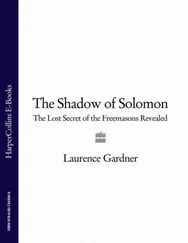438 G. Kozhevnikova, “Radical Nationalism in Russia in 2008, and Efforts to Counteract It,” Sova Center Reports and Analyses (April 15, 2009), http://xeno.sova-center.ru/.
439 More precisely, in 2008 the United States granted 1,107,126 people legal permanent resident status, and 1,046,539 were naturalized. There were 175 million visitors, of whom 90% were short-term, e.g., tourists and business travelers, and 10% (3.7 million) were longer-term temporary residents like specialty workers, students, and nurses. Between 2005 and 2008 U.S. border apprehensions ranged from 723,840 to 1,189,031 people per year. Drawn from the following reports by the U.S. Department of Homeland Security, Office of Immigration Statistics: R. Monger, N. Rytina, “U.S. Legal Permanent Residents: 2008,” Annual Flow Report, March 2009; J. Lee, N. Rytina, “Naturalizations in the United States: 2008,” Annual Flow Report, March 2009; R. Monger, M. Barr, “Nonimmigrant Admissions to the United States: 2008,” Annual Flow Report, April 2009; N. Rytina, J. Simanski, “Apprehensions by the U.S. Border Patrol: 2005-2008,” Fact Sheet, June 2009; J. Napolitano et al., 2008 Yearbook of Immigration Statistics , August 2009.
440 Canada admitted 247,243 legal permanent residents in 2008, of whom 149,072 were in the “Economic Class” (skilled workers), 65,567 were in the “Family Class” (reunification), and 32,602 were “Refugees” or “Other” classes. “Facts and Figures 2008—Immigration Overview: Permanent and Temporary residents,” Citizenship and Immigration Canada Web site, www.cic.gc.ca/english/resources/statistics/facts2008/index.asp (accessed August 22, 2009).
441 See pp. 121-128, K. B. Newbold, Six Billion Plus: World Population in the 21st Century (Lanham, Md.: Rowman & Littlefield Publishers, Inc., 2007), 245 pp.
442 Through their memberships in the European Free Trade Association (EFTA) and the Schengen Agreement, Iceland and Norway have essentially opened their labor markets to the EU.
443 As of 2005 the percent foreign born in the United States and Germany was 12.3% and 12.5%, respectively. Canada had the most with 19.3%. Data from Table 1, J.-C. Dumont, G. Lemaître, “Counting Immigrants and Expatriates in OECD Countries: A New Perspective,” OECD Social, Employment and Migration Working Papers, no. 25 (2005), 41 pp. See http://www.oecd.org/dataoecd/34/59/35043046.pdf.
444 Unusual warm spells in winter cause snow to partly melt, then refreeze, encasing the snowpack in ice. Starvation can result for herbivores unable to break through. Rain-on-snow events are particularly deadly; in October 2003 a particularly severe rainstorm killed approximately twenty thousand musk oxen, one-fourth of the herd, in Banks Island, Canada. J. Putkonen et al., “Rain on Snow: Little Understood Killer in the North,” Eos, Transactions, American Geophysical Union 90, no. 26 (2009): 221-222.
445 In 2007-08 crude birth rates in Nunavut averaged 25.2 per 1,000 versus 11.1 for all of Canada and 10.6 for Ontario. Total fertility rate (TFR) averaged 2.84 children per woman versus 1.59 TFR for all of Canada. Median age was 23.1 years in Nunavut versus 39.5 years for Canada. Source: Statistics Canada, www.40.statcan.gc.ca/l01/cst01/demo04b-eng.htm and www.statcan.gc.ca/pub/84f0210x/2006000/5201672-eng.htm (accessed August 28, 2009).
446 Personal interview with Iqaluit mayor Elisapee Sheutiapik, on the CCGS Amundsen icebreaker, August 5, 2007. For a strategic plan of Iqaluit’s deepwater port ambitions, see www.city.iqaluit.nu.ca/i18n/english/pdf/portproject.pdf.
447 Canada is comprised of provinces and territories. There are currently three territories: the Northwest Territories (NWT), Yukon, and Nunavut. Territories are politically autonomous but less powerful than provinces, which are constitutionally enshrined.
448 The Russian Federation recognizes almost 200 “nationalities,” of which 130 (~20 million people, or 14% of Russia’s population) are likely aboriginal. However, only 45 groups (~250,000 people) are officially recognized as such (“indigenous numerically small peoples of the north”), or about 0.2% of Russia’s total population. See B. Donahoe et al., “Size and Place in the Construction of Indigeneity in the Russian Federation,” Current Anthropology 49, no. 6 (2008): 993-1009.
449 North American aboriginal population data from the U.S. Census Bureau and Statistics Canada. For the Nordic countries, which do not collect ethnicity data during census, estimates are from UN World Directory of Minorities and Indigenous Peoples, available at http://www.minorityrights.org/directory.
450 As of the 2000 U.S. Census the aboriginal population of Alaska was 85,698 out of 550,043 (15.6%): U.S. Census Brief C2KBR/01-15, “The American Indian and Alaska Native Population: 2000,” February 2002, http://www.census.gov/prod/2002pubs/c2kbr01-15.pdf (accessed August 30, 2009). The Sámi population of Sweden averages about 11% (5,900/53,772) across Kiruna, Gällivare, Jokkmokk, and Arvidsjaur municipalities: Minority Rights Group International, World Directory of Minorities and Indigenous Peoples—Sweden: Sámi , 2008, http://www.unhcr.org/refworld/docid/49749ca35.html; in Finland about 40% (7,500/18,990) across Utsjoki, Inari, Enontekiö, and Sodankylä: Minority Rights Group International, World Directory of Minorities and Indigenous Peoples—Finland: Sámi, 2008, http://www.unhcr.org/refworld/docid/49749d2319.html; in Norway’s Finnmark County about 34% (25,000/73,000): Minority Rights Group International, World Directory of Minorities and Indigenous Peoples—Norway: Sámi, 2008, http://www.unhcr.org/refworld/docid/49749cd45.html. Denmark/Greenland and Sakha Yakut data from the Arctic Human Development Report (Akureyri: Stefansson Arctic Institute, 2004), 242 pp. But in the Russian North, aboriginals officially number only about 250,000 and thus comprise just 0.2% of the total population: Government of the Russian Federation, “Yedinyy perechen’ korennykh malochislennykh narodov Rossiyskoy Federatsii (Unified list of indigenous numerically small peoples of the Russian Federation),” Confirmed by Decree 255 of the Russian Government, March 24, 2000.
451 American Indians and Alaska Natives, currently numbering 4.9 million, are expected to rise to 8.6 million by 2050. U.S. Census Bureau, Press Release CB08-123, “An Older and More Diverse Nation by Midcentury,” August 14, 2008, http://www.census.gov/Press-Release/www/releases/archives/population/012496.html (accessed August 29, 2009). Canada’s 2006 census recorded 1,172,790 people as North American Indian (First Nations), Inuit, or Métis (mixed race), versus 976,305 in 2001 and 799,010 in 1996. Statistics Canada, Press Release, Aboriginal Peoples in Canada in 2006: Inuit, Métis and First Nations, 2006 Census, January 15, 2008, http://www.statcan.gc.ca/daily-quotidien/080115/dq080115a-eng.htm (accessed August 30, 2009).
452 Tlingit Nation had even recorded a protest with Russia on this issue, T. Penikett, Reconciliation: First Nations Treaty Making in British Columbia (Vancouver: Douglas & McIntyre Ltd., 2006), 303 pp.
453 For a history of the circumstances and politics leading to the landmark ANCSA bill, see W. R. Borneman, Alaska: Saga of a Bold Land (New York: HarperCollins Perennial, 2004), 608 pp.
454 After ANCSA the U.S. federal government owned nearly 60% of the land in Alaska, the state 28%, and the regional corporations 12%. All other private lands combined totaled less than 2%.
455 Subsurface mineral rights are retained by the regional corporations, but village corporations can obtain surface rights, e.g., water and timber. Alaska’s twelve regional corporations are Ahtna, Inc.; The Aleut Corporation; Arctic Slope Regional Corporation; Bering Straits Native Corporation; Bristol Bay Native Corporation; Calista Corporation; Chugach Alaska Corporation; Cook Inlet Region, Inc.; Doyon Ltd.; Koniag, Inc.; NANA Regional Corporation, Inc.; and Sealaska Corporation. A thirteenth, aptly called The 13th Regional Corporation, received cash only for Alaska aboriginals residing outside the state.
Читать дальше












